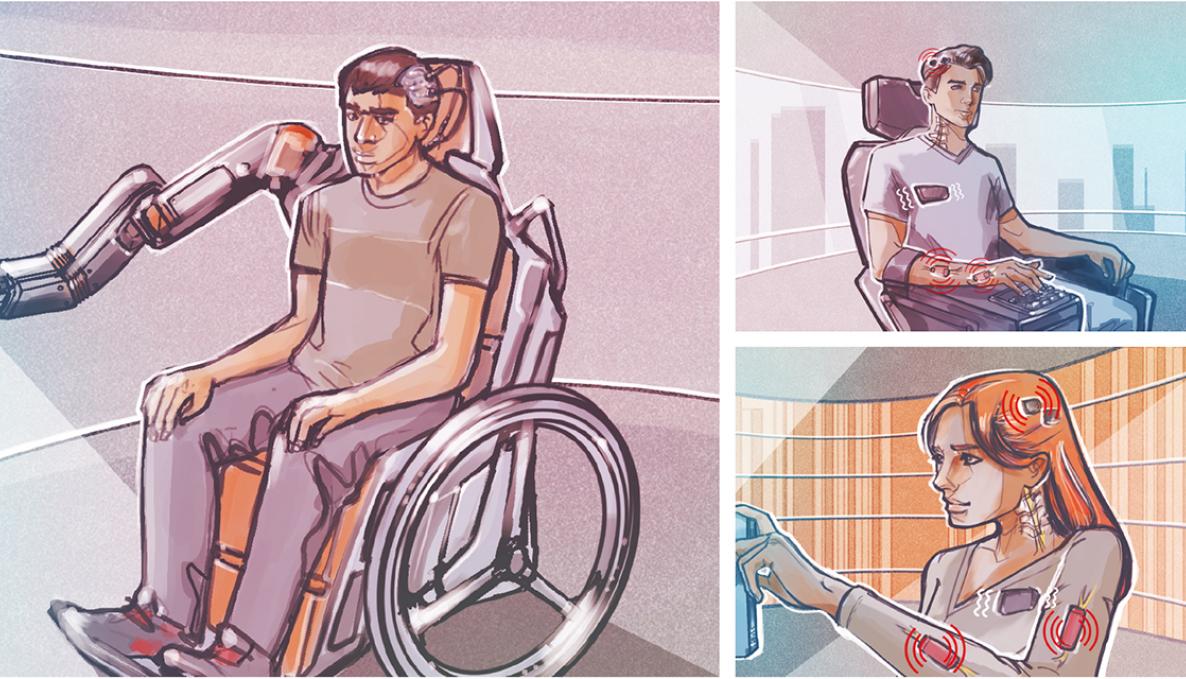Pioneering innovation in Neurorehabilitation: SSSA and UNISR announce the establishment of the new joint laboratory on Modular Implantable Neurotechnology (MINE Lab) for the development of innovative implantable technologies

The Sant’Anna School of Advanced Studies (SSSA) in Pisa and Vita-Salute San Raffaele University (UNISR) in Milan are thrilled to announce the establishment of the groundbreaking UNISR-SSSA Joint Laboratory on Modular Implantable Neurotechnology (MINE Lab). This joint research initiative, led by Profs. Pietro Mortini, Full Professor of Neurosurgery at UNISR and Silvestro Micera, Full Professor of Bioelectronics and Neural Engineering at SSSA, is dedicated to advancing the field of neurorehabilitation through the development of innovative and multimodal implantable technologies.
Mission and Approach
The core mission of MINE Lab is to bridge the gap between cutting-edge implantable neurotechnologies and practical applications. To achieve this, the lab adopts an iterative approach, involving:
- Personalized Neurotechnologies: Developing customized interventions tailored to the specific needs of each individual to maximize the effectiveness of rehabilitation strategies.
- Remote Clinical Progress Tracking: Utilizing multimodal and intelligent systems to monitor patients' progress in unstructured environments and during their daily lives, extending beyond traditional clinical settings.
- Stakeholder Engagement: Actively involving key stakeholders, including clinicians, patients, and caregivers, in the conceptualization of new ideas to enhance the development of technologies for successful translation into clinical practice.
Research Focus Areas
Leveraging expertise in neurosurgery, neural engineering, neurorehabilitation, biomedical signal and image processing, wearable sensors, and artificial intelligence, MINE Lab will develop groundbreaking neurotechnological modules to:
- Restore Movements: Optimize neurostimulation technologies for cortical, spinal, and peripheral neuromodulation, along with robotic devices for rehabilitation.
- Remote Assessment: Capture motor functions in unstructured environments through multi-modal wearable sensors and artificial intelligence algorithms.
- Motor Decoding Strategies: Explore human-machine interfaces enabling individuals to control and communicate with external devices through neural signals.
- Restore Sensory Feedback: Develop homologous, multisensory modalities to restore thermal, tactile, and proprioceptive functions.
Future Endeavors
Over the coming years, the MINE Lab aims to expand its impact by extending the patient population, potentially developing artificial organs after cancer removal. The multidisciplinary team at MINE Lab will collaborate closely with patients and clinicians to address real-world clinical challenges, ensuring the practical application of cutting-edge implantable neurotechnologies.
“In our DNA there has always been the willingness and the pride to develop new therapies, achieving extraordinary results in the clinical practice. UNISR and SSSA can create together a unique organizational and interdisciplinary synergy, which arises from the encounter between our expertise in neurosurgery and the SSSA’s expertise in bioelectronics and neural engineering. Thanks to this approch, we are creating a new scientific challenge and also a great opportunity for those who are affected by diseases which are currently considered incurable”. Professor Pietro Mortini, full professor of Neurosurgery, UNISR and Head of the Neurosurgery Division, IRCCS Ospedale San Raffaele
“The strategic partnership with Prof. Mortini’s team and all UNISR will allow us to extensively test together new technologies to help people with motor and sensory disabilities increasing their independence and quality of life. Through the MINE Lab, neurotechnology is poised to significantly enhance its clinical impact, yielding anticipated outcomes in both clinical and industrial applications” says Prof. Silvestro Micera, full professor at SSSA and Head of the Bioelectronics and Neural Engineering Area.



